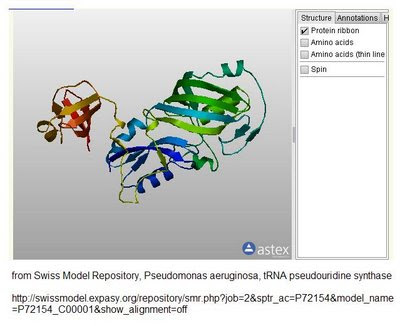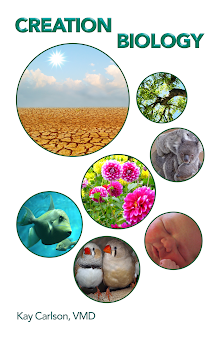One of these articles (don't give up--you don't have to understand the jargon) is by Csürös, Rogozin and Koonin, "Extremely Intron-Rich Genes in the Alveolate Ancestors Inferred with a Flexible Maximum-Likelihood Approach," Molecular Biology and Evolution 25, 5 (Online Feb. 21, 2008): 903-911. You can link to the article abstract by clicking on the title.

To understand the significance, you need to know that there are different types of cells. Two major types are Prokaryotes and Eukaryotes. Eukaryotes (pronounced you-carry-oats) are the cells humans and multi-celled animals have. Prokaryotes (pro-carry-oats) are the type that many (not all) single-celled organisms have, such as bacteria. There is much more detail about the differences at Wikipedia under Cell (biology) HERE . A few of the differences are: 1) DNA in the eukaryote is structured and divides differently than the prokaryote; 2) the eukaryote has a type of skeleton in the cell but not the prokaryote; 3) the eukaryote has INTRONS and the prokaryote does not. The introns are what I have been talking about in the last few posts. They are "extra" parts of the DNA which are copied to RNA and are removed before RNA makes the protein. You can see the mechnism and parts needed for it in the previous posts (scroll or click spliceosome link below).
So the research reported by the article above was to use mathematical tools to find out how many introns were in the ancestors of selected living eukaryotes. The abstract, or short description of the paper, admits that the outcome was unexpected. The ancestors of several subgroups of organisms they studied had much higher levels of introns than one might predict if one expected Darwinian evolution. In fact, one subgroup had a higher intron density than humans!
Now, look at my previous entries about spliceosomes (you can click HERE to see them or on the spliceosome label at the bottom of the post). These show that five spliceosomes are used in the splicing process to remove introns. There has to be genetic codes in DNA to make each of the RNA-protein units (U1, U2, U4-6). The units also must have work done to form them into the shapes they need to do specific jobs (just like hammers and screwdrivers need to be certain shapes to do their jobs).
Not all the structures of proteins have yet been worked out. But below is an image from Swiss Model Repository of a protein molecule that changes RNA structure, called a pseudouridine synthase. It is from an organism known as Pseudomonas aeruginosa. It works on a different RNA, called tRNA, but it gives you an idea of the type of molecule needed to change the shapes of RNA into what you have seen on my posts about spliceosomes. (I have added the link to ExPASy HERE. When you get to that page, you can access Swiss Model Repository which computes these models.)

The findings in the article to me imply that the ancestors of eukaryotes must have had these complex mechanisms from the start. The theory that these cells and the bacterial prokaryote cells had a common ancestor is wearing thin. As Hugh Ross and others have explained, findings in geology have shown that not much time lapsed between the cooling of the earth and the start of biological life. The spliceosomes and the DNA and proteins needed to form them have thousands of atoms in specific positions to allow them to do specific activities. These atoms have astronomical numbers of potential combinations, but only extremely rare combinations will work. As I said, it's an exciting time in biology.






No comments:
Post a Comment
Comments are moderated. You do not have to agree, but please be civil. Thanks for your interest.